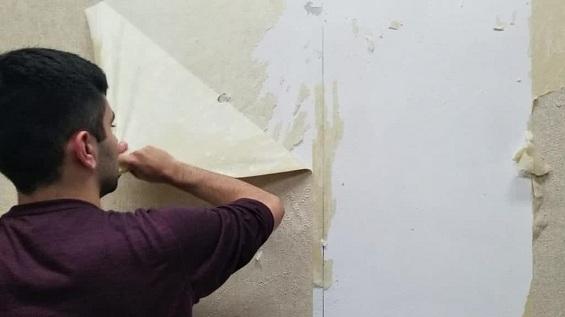When it’s time to give your walls a fresh new look, you’re faced with the decision of whether to remove the existing wallpaper or simply paint over it. Both options have their pros and cons, and the choice you make will depend on factors like the condition of the wallpaper, your desired outcome, and your available time and budget. In this comprehensive guide, we’ll explore the differences between removing wallpaper and painting over it, helping you make an informed decision to achieve the best results for your home.

Removing Wallpaper:
Assessment and Preparation:
Before removing wallpaper, assess its condition. If it’s peeling, damaged, or outdated, removal might be the best choice. Start by removing any furniture or items near the walls to protect them during the process.
Gather Supplies:
You’ll need a few tools to remove wallpaper, including a wallpaper scraper, a spray bottle filled with water, a sponge, and a drop cloth to catch debris.
Peeling and Scraping:
Use the wallpaper scraper to gently peel and scrape the wallpaper from the wall. If it’s not coming off easily, you can use the spray bottle to dampen the wallpaper and let it soak for a while before scraping.
Cleaning the Wall:
Once the wallpaper is removed, clean the wall thoroughly to remove any adhesive residue. A mixture of water and mild detergent can help with this.
Repair and Primer:
Check the wall for any imperfections or damage. Repair any holes or uneven areas with spackle and sand them smooth. Applying a primer before painting is essential to create an even surface.
Painting Over Wallpaper:
Assessment and Preparation:
If the existing wallpaper is in good condition, without peeling or extensive damage, and is adhered well to the wall, you might consider painting over it.
Clean and Smooth:
Clean the wallpaper thoroughly to remove dust and dirt. Sand down any seams or edges to create a smoother surface.
Primer and Paint:
Apply a high-quality primer that is designed to adhere to glossy or non-porous surfaces, as wallpaper can be less porous than regular walls. Once the primer is dry, you can paint over the wallpaper with your desired color.
Comparison:
Removing Wallpaper:
- Pros: Provides a fresh start, allows for wall repairs, avoids potential future issues with adhesion, can update the look of the room.
- Cons: Labor-intensive, time-consuming, can damage the wall’s surface, may require additional repairs and priming.
Painting Over Wallpaper:
- Pros: Faster and less labor-intensive, cost-effective, suitable for well-adhered wallpaper, can be a temporary solution.
- Cons: Texture and seams of the wallpaper may show through, potential adhesion issues if wallpaper loosens over time, limited in changing the texture of the wall.
Deciding between removing wallpaper and painting over it depends on your specific situation and goals. Removing wallpaper offers a fresh canvas for your walls and allows for repairs, but it requires more time and effort. On the other hand, painting over wallpaper can be a quicker solution if the wallpaper is in good condition. Whichever option you choose, proper preparation and the right materials are crucial for achieving a successful outcome.





